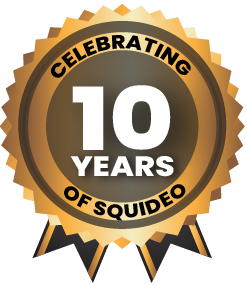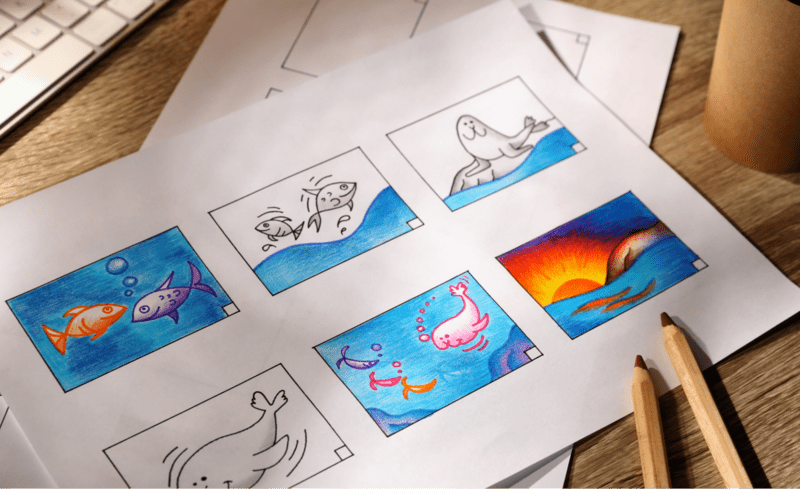Universities Are Using Animated Video to Share Research Projects

From climate change modelling to medical breakthroughs, university research projects are often complex, technical, and difficult to explain to non-specialists. Animated video is one of the most effective tools for academic storytelling, helping research teams reach wider audiences, secure grants, and fulfil dissemination goals with ease.
In a fast paced academic world where clarity, outreach, and impact are everything, animated videos are an essential tool for research communication. Global universities and research centres are turning to animation to simplify their most complex findings, while engaging broader audiences.
At Squideo, we’ve worked with a wide range of universities and academic institutions to bring research to life through powerful, polished 2D animated videos. Whether it’s summarising a PhD thesis or visualising the findings of a multi-year Horizon Europe project, our team knows exactly how to turn dense academic material into captivating, easy to understand content.
Why Use Animation for Academic Research?
Animated video is more than just a visual aid, it’s a storytelling tool that bridges the gap between specialist knowledge and public understanding. Here’s why research teams are using animation:
1. Simplifies Complex Concepts
Whether your project is about AI, epidemiology, environmental science, or social behaviour, animation can break down complex models and processes into visual metaphors that everyone can grasp.
2. Boosts Engagement
Compared to static PDFs or long journal articles, a 60-90 second animated explainer retains attention far better. Viewers remember 95% of a message when it's delivered via video compared to just 10% when reading text.
3. Fulfils Dissemination Requirements
Grant bodies such as UKRI, Horizon Europe, and AHRC require researchers to demonstrate public engagement and impact. An animated video can be used in presentations, on research hubs, and shared on social media to meet those requirements.
4. Reaches Multiple Audiences
An
explainer video helps communicate your research to:
- Students and teaching staff (e.g., as a learning resource)
- Policy makers (who want key takeaways quickly)
- The general public (to increase awareness)
- Fellow researchers (for conferences and cross-disciplinary talks)
- The Squideo Approach to Academic Animation
At Squideo, we’re not just animators; we’re skilled communicators who understand research. Our team has worked with departments across
medicine, psychology,
education, and computer science to help them deliver clear, visually engaging summaries of complex studies.
We ask the right questions to ensure we fully understand your research goals, not just what your study is about, but why it matters, who it’s for, and what outcomes you’re aiming to achieve. You may be looking to raise public awareness, explain a new methodology, influence policy, or simply make your work more accessible to non-experts, we tailor our animations to suit.
We’ll explore questions like: What are the three main takeaways from your research? Who are you trying to engage - funders, students, policymakers, patients? Are there concepts that typically get misunderstood or oversimplified? This discovery phase ensures that every second of your video communicates purposefully and presents your research in the clearest, most compelling way possible.
We offer a range of 2D animation styles tailored to your audience and subject matter. Each has distinct advantages:
1. Whiteboard Animation
Perfect for step-by-step explanations, this style mimics hand-drawn illustrations appearing in real-time. It’s great for:
- Educational overviews
- Timeline-based research
- Process breakdowns (e.g., clinical trials, behavioural models)
2. Motion Graphics
Highly professional and clean, motion graphics use sleek transitions and data visualisation. Ideal for:
- Research funding reports
- Statistical findings
- Economic or social science projects
3. Cartoon / Character Animation
This friendly style uses
characters to humanise the research problem or illustrate lived experiences. Suitable for:
- Mental health or wellbeing research
- Social justice projects
- Youth and community engagement
4. Infographic Animation
Animated graphs, maps and data visuals to help your findings jump off the page. Great for:
- Survey data
- Geographical analysis
- Policy recommendations
A Useful Tool for Early Career Researchers
If you’re a PhD student, postgrad, or early career academic, an animated video of your research project or thesis isn’t just a nice to have, it can be a career asset.
Use your video in job interviews or funding applications- Embed it in personal websites or online portfolios
- Share it on LinkedIn or Twitter/X to raise your profile
- Present it at conferences, symposiums, or public engagement events
A research summary video positions you as someone who understands the value of clear communication, a huge asset in any academic or industry role.
Case Study: Making Complex Cancer Research Understandable
When the University of Sussex and the GoGirls Ovarian Cancer Support Group needed help explaining the science behind PARP inhibitors (a type of targeted cancer drug), they turned to Squideo to translate medical jargon into an accessible animated explainer video.
The goal? To educate newly diagnosed ovarian cancer patients and their families about the science behind PARP and PARP inhibitors, including how these drugs work, who they’re suitable for, and what patients should expect, all without overwhelming them with scientific language.
Breaking Down the Science
PARP inhibitors are a complex subject, even for healthcare professionals. These drugs work by blocking enzymes (called PARP) that help repair damaged DNA in cancer cells, a mechanism particularly effective in patients with BRCA mutations.
Explaining this to a non-medical audience was a challenge, but one that Squideo’s team was well equipped for.
We worked closely with researchers, medical experts, and patient advocates to:
- Script a narrative that balanced empathy with scientific accuracy.
- Use analogy-based storytelling (comparing DNA repair to a factory’s repair team).
- Incorporate soft, friendly 2D animation to ease viewer anxiety while maintaining credibility.
- Highlight key terminology visually, so patients could feel more confident during treatment discussions.
The Result
The final video was praised by both patients and clinicians for its clarity and tone. It’s now used by NHS clinicians and ovarian cancer charities as a go-to educational resource. For GoGirls, it also became a valuable tool for funding applications and outreach, demonstrating how well-communicated content can extend a research project's impact far beyond academia.
Collaborating with Academics to Turn Complex Research Into Clear, Compelling Videos
At Squideo, we regularly work with subject matter experts, PhDs, postgrads, and academic researchers who bring a wealth of specialist knowledge to the table. Our job is to take that expertise and translate it into visually engaging, digestible animated videos that can reach audiences beyond the academic bubble.
We understand that many researchers have spent years immersed in complex methodologies, datasets, or theoretical frameworks, and that summarising all of this into a 60-90 second animated video can feel daunting. That’s why we begin every academic project with a structured discovery session designed to unpack your research in a way that respects the integrity of your findings - while making them accessible to students, funding bodies, policymakers, or the general public.
Whether you're funded by UKRI, Horizon Europe, or another body with dissemination requirements, we know the questions to ask to shape your animation into an effective communication tool.
Some of the key discovery questions we explore with every academic client include:
- What are the top 2-3 takeaways you want viewers to remember from your research?
- Who do you want this video to reach? Fellow researchers, students, policymakers or the media.
- Are there any concepts or findings that are particularly difficult to explain through traditional means like reports or lectures?
- What impact are you hoping the video will have - awareness, engagement, action, or funding?
- Are there any key visuals, graphs, models, processes, we should consider animating to bring clarity?
By asking these focused questions, we’re able to shape your content into a narrative that not only meets your project’s communication goals but amplifies the reach and impact of your research.
And because Squideo has already worked with leading universities across the UK, including helping students and departments secure funding to support animation as part of a grant, we’re familiar with both the expectations and the processes involved. From funding approvals to final delivery, we ensure your research is communicated clearly, creatively, and credibly.
We understand how to translate academic tone into compelling visual storytelling. And with our collaborative process, unlimited feedback loops, and fixed pricing, you’re supported every step of the way.
We also provide voiceovers in multiple accents and languages, subtitles, and formats for web, presentation, or social sharing.
Ready to Animate Your Research?
If you have a project that needs explaining, we’d love to help. Whether it’s early stage ideas or fully peer reviewed publications, Squideo can make your research accessible, memorable, and shareable.
Download our free brief template to get started, or
book a discovery call with our team today.













